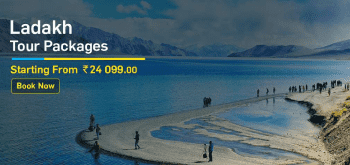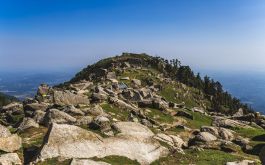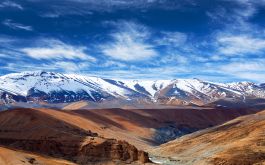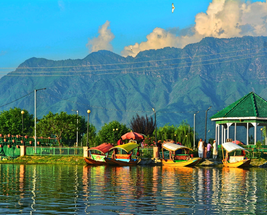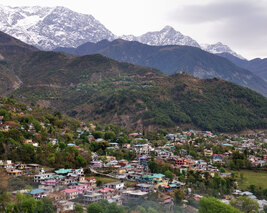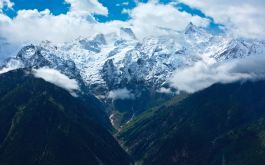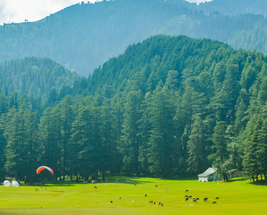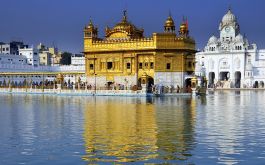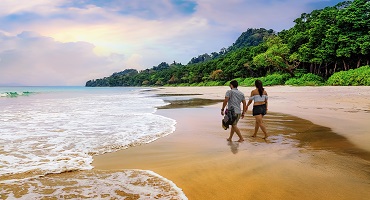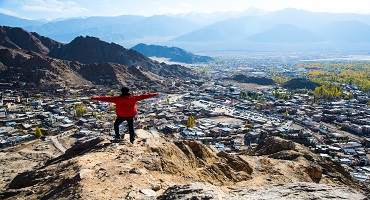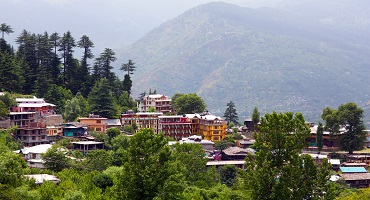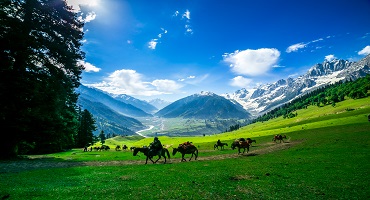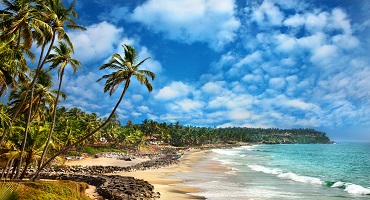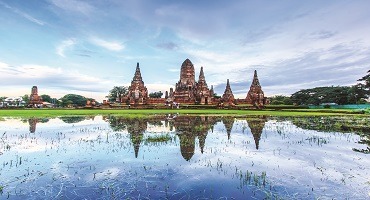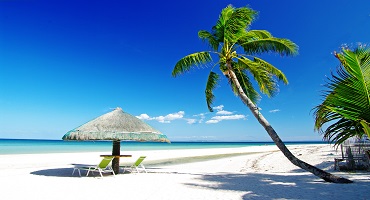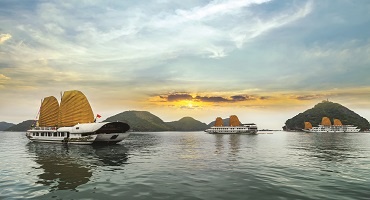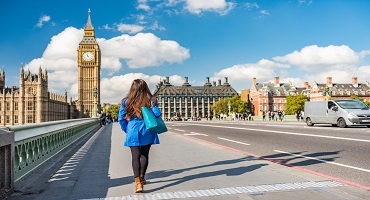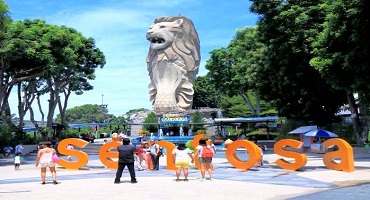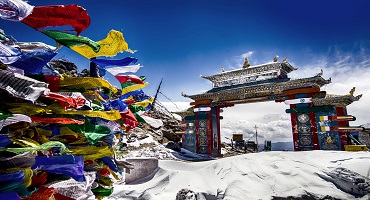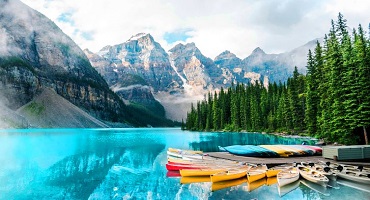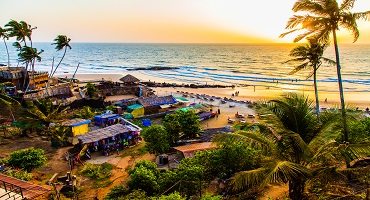Nestled in the Chamba district of Himachal Pradesh, Dalhousie is one of the most famous spots to visit on India’s hill-station circuit. Set at altitude of 1970 metres, this picturesque town sprawls across the five hills of Terah, Bakrota, Bangor, Potreyn and Kathalagh, surrounded by dense pine forests and overlooking a stunning view of the snow-capped Pir Panjal Mountains. The quaint old town has retained its Colonial heritage in architecture, monuments, bungalows and general atmosphere. This is wonderfully juxtaposed by the modern development of the town, the indigenous history of the region and its pristine preserved natural eco-systems.
If that wasn’t enough to awaken the travel bug in you, Dalhousie is also a year-round destination making it so much easier to plan a trip that suits your convenience. Of course, being a Himalayan hill-station, familiarising yourself with the weather conditions is necessary for you to determine the best time to visit Dalhousie.
Read on, for a seasonal breakdown with all the information you need.
Peak Season — Spend days exploring or adventuring and nights under starry skies. Yes, the best season to visit Dalhousie is between March and June, when the hill-station is bathed by the warmth of the summer sun.
Shoulder Season — July to September
Low Season — October to February
|
Travel Season
|
Min / Max Temperatures
|
Season
|
|
March - June
|
18-29°C
|
Cool, ideal
|
|
July - September
|
11–23°C
|
Light to moderate rainfall
|
|
October - February
|
4-14°C
|
Cold
|
Dalhousie In Summers (March to June)
Temperature - The snow begins to melt with temperatures on the rise. Still, it never exceeds 30 degrees or drops much below 18, making it a great time to visit.
Weather - Summers get hotter as the season progresses. Mornings and nights can get quite cool and windy, but the daytime is just right for being out and about. By May, early signs of the monsoon appear, bringing about one-off showers and a floral splendour to the region.
Significance - This is the ideal season to get away from scorching city summers and indulge in an adventure filled holiday in the mountain tops. This is when tourism peaks, with seasonal activities like rafting, trekking, paragliding, nature walks, sightseeing and more, in full flow.
Why you should visit - Pick a summer tour to explore Dalhousie and its surrounding regions with complete accessibility and comfort. Some of the top things to do include visiting the beautiful Panchpula stream, having a picnic at the Subhash Baoli spring or taking the intrepid Sach Pass trail. The clear summer skies act as the perfect canvas for those who enjoy photography.
Things to know before the visit - Expect hotels and attractions to be packed with tourists as this is the most popular time to visit Dalhousie. Avoid any on ground hassles by making advanced bookings.
Tips — By April, the snow starts to melt, and warm days truly begin. Carry a cap and sunscreen for sun protection. A sturdy pair of walking shoes and simple jacket should be enough for daily wear.
Dalhousie In Monsoon (July to September)
Temperature - Temperatures during the rainy season usually sit between 18 to 23 degrees during the day and 13 to 19 degrees at night, thus Dalhousie remains a popular monsoon getaway.
Weather - Dalhousie experiences a milder monsoon than many other parts of the country, with a low fre-quency of heavy showers. The air remains cool no matter day or night, while strong winds can appear from time to time.
Significance - Not many places can compete with Dalhousie as a highly rated monsoon destination. The rains wash away any residual summer heat and breathe new life into the abundant natural surrounds. Additionally, the harvest celebration called Minjar Fair is held in July-August and the Manimahesh Yatra takes place in August-September.
Why you should visit - Monsoons in Dalhousie offer the perfect setting for a romantic, adventurous or cultural experience. The wettest months provide some activities like visiting Khajjiar, the picturesque town popularly called the “Switzerland of India” or witnessing the captivating Satdhara Falls in gushing glory, alongside daily recreation like boating, horse riding and hiking.
Things to know before the visit - Dalhousie isn’t prone to floods or landslides, unlike other mountainous regions, so you don’t have to worry much about the climatic conditions and safety. Most parts of the region remain accessible.
Tips — A rain proof jacket and good pair of shoes would be enough to see you through a monsoon trip of Dalhousie. It is naturally a season that brings out insects, so do carry mosquito and bug repellent.
Dalhouisie In Winters (October to February)
Temperature - Given its location, Dalhousie naturally has cold winters, with temperatures plummeting to zero on some nights. Days are usually between 11 to 13 degrees, comfortable enough to be in the out-doors.
Weather - The winter sun balances out the cold weather during the day, but its protection goes away as the night progresses. Snowfall is a common occurrence, further adding to the charm of the destination.
Significance - Between October to February, Dalhousie becomes a sight to behold, surrounded by snow-capped mountains, warmly lit town streets and gorgeous panoramas all around. It is also the shoulder season for tourism which means you can enjoy the many attractions at their least crowded.
Why you should visit - There are plenty of special winter activities such as watching a sunset at Khajjiar Lake, sightseeing and shopping, wilderness walks like Garam Sadak, hikes, treks and other explorations into nature and most importantly — the chance to play in snow!
Things to know before the visit - Weather is the most challenging factor during this season, so be prepared and pack for the cold. Snowfall is common in and around Dalhousie, once peak cold sets in.
Tips - Make a list of items to carry so that you don’t forget any essentials. For the winters, be sure to take enough woollens and protective gloves, caps and other gear. Snow or trekking boots are ideal. If you wish to see snowfall, try and get there December onwards.
Begin your journey to Dalhousie with Thomas Cook Dalhousie Holiday packages. Pick from a host of tours and deals for your preferred time of the year, so that you get to experience the best the season has to offer.






